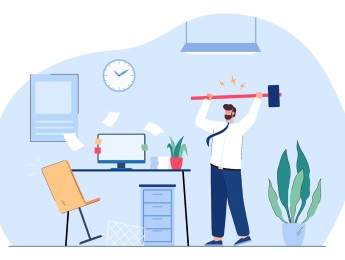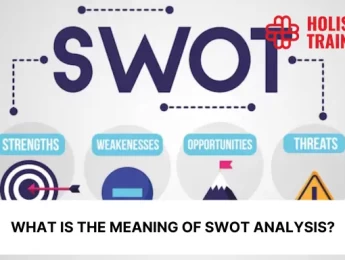Introduction
Effective project management goes hand in hand with successful stakeholder engagement. Whether you are managing a large-scale construction project, launching a new product, or implementing organisational changes, engaging with stakeholders is crucial for achieving your goals. In this comprehensive guide, we'll explore the intricacies of stakeholder engagement and walk you through the process of creating a stakeholder engagement plan that ensures all parties involved are heard and aligned.
What Is Stakeholder Engagement?
Stakeholder engagement is a dynamic and iterative process that involves building and maintaining relationships with individuals, groups, or organisations that have an interest or influence in your project or initiative. It's about actively involving these stakeholders in the decision-making process, understanding their perspectives, and addressing their concerns and needs. Effective stakeholder engagement can lead to better project outcomes, reduced risks, and improved stakeholder satisfaction.
The 5 Levels of Stakeholder Engagement
Stakeholder engagement is not one-size-fits-all. It can vary in intensity and scope depending on the project and the stakeholders involved. Here are the five levels of stakeholder engagement:
Level | Description |
Unaware | Stakeholders have little to no awareness of the project, and their involvement is minimal. |
Resistant | Stakeholders are aware of the project but may be resistant to it due to perceived risks. |
Neutral | Neutral stakeholders have a moderate level of awareness and may not be actively engaged. |
Supportive | These stakeholders are aware of the project, support it, and may actively contribute resources. |
Leading | Leading stakeholders are highly engaged and play a pivotal role in shaping the project's direction and success. |
Understanding where your stakeholders fall on this spectrum is essential for tailoring your engagement strategies.
Why Is Stakeholder Engagement Important in Project Management?
Stakeholder engagement is not just a buzzword; it's a fundamental aspect of project management for several compelling reasons:
Risk Mitigation
Engaging stakeholders early and throughout the project can help identify and address potential issues and risks before they escalate. This proactive approach minimises the chances of costly setbacks.
Enhanced Decision-Making
Input from diverse stakeholders leads to better-informed decisions, considering a wide range of perspectives and expertise. This diversity of thought can uncover innovative solutions and help avoid tunnel vision.
Resource Allocation
Efficient resource allocation is possible when you understand the priorities and preferences of key stakeholders. This ensures that resources are used effectively and aligned with project goals.
Improved Communication
Effective engagement fosters open and transparent communication, reducing misunderstandings and conflicts. Clear and consistent communication is the bedrock of successful project management.
Enhanced Stakeholder Satisfaction
Engaged stakeholders are more likely to be satisfied with the project's outcomes. Their satisfaction not only leads to positive relationships but also opens doors for potential future collaborations and partnerships.
What Is a Stakeholder Engagement Plan?
A stakeholder engagement plan is a structured document that outlines how you will identify, analyse, and engage with stakeholders throughout the project lifecycle. It serves as a roadmap for building and maintaining positive relationships with stakeholders, ensuring their concerns are addressed, and their interests are aligned with project goals.
Now, let's explore the benefits of creating a stakeholder engagement plan in more detail.
Benefits of Creating a Stakeholder Engagement Plan
Creating a stakeholder engagement plan offers numerous advantages, contributing to the overall success of your project:
Improved Stakeholder Relationships
A well-structured plan demonstrates your commitment to engaging with stakeholders, which can lead to stronger, more positive relationships. When stakeholders feel heard and valued, they are more likely to be cooperative and supportive.
Enhanced Project Understanding
Stakeholders who are actively engaged have a better understanding of the project's objectives, scope, and potential challenges. This understanding reduces misconceptions and unrealistic expectations.
Early Issue Identification
Engaging stakeholders early in the project lifecycle allows you to identify and address issues before they become major obstacles. Early intervention is often more cost-effective and less disruptive.
Alignment of Interests
A clear engagement plan helps align the interests of stakeholders with the project's goals, reducing conflicts and resistance. When stakeholders see how the project benefits them, they are more likely to support it.
Greater Accountability
Roles and responsibilities outlined in the plan promote accountability among team members and stakeholders. Everyone knows their role in the engagement process, ensuring that efforts are consistent and effective.
Efficient Resource Allocation
Understanding stakeholder priorities helps optimise resource allocation, ensuring that efforts are focused where they matter most. This efficiency leads to cost savings and better resource utilisation.
Enhanced Decision-Making
Input from engaged stakeholders provides a broader perspective and more robust data for making informed decisions. This diversity of input enhances the quality of decisions and reduces the likelihood of costly mistakes.
Risk Mitigation
By actively involving stakeholders in risk identification and management, you can reduce the likelihood of costly project setbacks. Early identification and mitigation of risks are critical to project success.
Now that we've explored the importance and benefits of stakeholder engagement plans, let's dive into the step-by-step process of creating one.
Step-by-step: How to Create a Stakeholder Engagement Plan
Creating a stakeholder engagement plan is a critical phase in any project, as it sets the foundation for building meaningful relationships with those who have a stake in your initiative. Let's delve into each step in more detail to provide a comprehensive understanding of the process.
Step 1: Identify Stakeholders
Stakeholder identification is the initial and crucial step in creating an effective engagement plan. Here's how to go about it:
Comprehensive Listing
Begin by compiling a comprehensive list of all potential stakeholders. This includes individuals, groups, and organisations that can influence or be affected by your project. Don't limit your search to just internal or immediate stakeholders; think broadly.
Use Stakeholder Maps
Stakeholder maps or diagrams can be valuable tools for visualising the stakeholder landscape. These maps help identify relationships, dependencies, and power dynamics between stakeholders. They can also highlight hidden stakeholders who might not be immediately obvious.
Surveys and Feedback
In some cases, you might use surveys, questionnaires, or interviews to gather input from various parties. For instance, a customer satisfaction survey can help identify customer concerns and expectations.
Continuous Review
Stakeholder identification is not a one-time task. It should be an ongoing process throughout the project, especially when circumstances change or new stakeholders emerge.
Step 2: Analyse Stakeholders
After identifying stakeholders, it's essential to analyse them to understand their unique characteristics and expectations:
Level of Influence
Determine the level of influence each stakeholder wields over your project. Stakeholders can range from those with high influence, such as the project sponsor or regulatory authorities, to those with minimal influence, like a casual observer.
Interest Level
Gauge the degree of interest each stakeholder has in your project. High-interest stakeholders are deeply involved or significantly impacted, while low-interest stakeholders may have minimal concerns.
Potential Impact
Assess the potential positive or negative impact each stakeholder can have on your project. This involves considering their resources, expertise, and ability to advocate or oppose the project.
Prioritise Stakeholders
Based on your analysis, prioritise stakeholders. This prioritisation helps you allocate resources and tailor engagement efforts to those who have the most significant influence and interest.
Step 3: Define Engagement Strategies
Once you've identified and analysed your stakeholders, it's time to determine how you will engage with each group effectively:
Tailored Approach
Customise your engagement strategies for each stakeholder group. Not all stakeholders will respond to the same methods or channels. Some might require frequent face-to-face meetings, while others may prefer email updates or participation in advisory groups.
Two-way Communication
Effective engagement is a dialogue, not a monologue. Create opportunities for stakeholders to voice their concerns, suggestions, and questions. Ensure that their feedback is considered in project decision-making.
Consistency
Consistency is key in engagement. Establish a regular cadence of communication and engagement activities. Whether it's monthly updates, quarterly meetings, or annual reports, consistency builds trust.
Feedback Mechanisms
Implement feedback mechanisms that allow stakeholders to provide input easily. This can include suggestion boxes, online feedback forms, or dedicated communication channels.
Step 4: Create a Communication Plan
Communication is at the heart of stakeholder engagement. A well-structured communication plan ensures that your messages reach the right people at the right time:
Audience Segmentation
Tailor your messages to the specific needs and interests of each stakeholder group. What matters to one group may not be relevant to another.
Channels
Determine the most effective communication channels for each stakeholder group. This could include email, newsletters, social media, in-person meetings, or dedicated project websites.
Frequency
Specify how often you will communicate with each group. Some stakeholders may require more frequent updates, while others prefer periodic summaries.
Key Messages
Define the core messages you want to convey to each stakeholder group. These messages should align with the project's goals and address the concerns and expectations of the stakeholders.
Step 5: Assign Roles and Responsibilities
Clear roles and responsibilities are crucial to ensuring that your engagement efforts are coordinated and effective:
Stakeholder Liaison
Appoint a stakeholder liaison or point of contact for each stakeholder group. These liaisons should be knowledgeable about the project and responsive to stakeholder inquiries.
Communication Coordinator
Designate someone responsible for coordinating communication efforts. This person ensures that messages are delivered in a timely and consistent manner.
Issue Resolution Team
Create a team or process for identifying, documenting, and resolving stakeholder issues and concerns. This team should have the authority to address problems promptly.
Monitoring and Evaluation Team
Establish a team responsible for tracking the success of your engagement efforts. They should regularly assess whether your strategies are achieving the desired outcomes and make adjustments as needed.

Step 6: Set Up Monitoring and Evaluation
Measuring the success of your engagement efforts is essential to making improvements and demonstrating the value of stakeholder engagement:
Key Performance Indicators (KPIs)
Identify specific KPIs that align with your engagement objectives. Common KPIs include stakeholder satisfaction scores, the number of issues resolved, or the level of stakeholder involvement in project activities.
Regular Evaluation
Schedule regular evaluations to review your plan's effectiveness. This might involve quarterly or annual assessments to identify areas for improvement and optimisation.
Feedback Loop
Ensure there is a feedback loop in place. Stakeholders should have a way to provide input on the engagement process itself. Use their feedback to refine your strategies and make the engagement experience more meaningful.
Step 7: Develop Issue Resolution Procedures
Issues and concerns from stakeholders are inevitable. How you handle them can significantly impact your project's success and stakeholder satisfaction:
Transparency
Maintain transparency in issue resolution. Acknowledge concerns promptly and communicate the steps you are taking to address them. Transparency builds trust.
Timeliness
Develop a process that allows you to identify, document, and resolve stakeholder issues in a timely manner. Delays in issue resolution can lead to frustration and escalate problems.
Accountability
Clearly define who within your organisation is responsible for addressing different types of issues. Ensure that there is accountability for resolving problems effectively.
Step 8: Review and Adapt
Stakeholder engagement plans should be dynamic and adaptable:
Regular Reviews
Schedule periodic reviews of your stakeholder engagement plan to assess its relevance and effectiveness. These reviews may coincide with project milestones or significant changes in stakeholder dynamics.
Update as Needed
Be prepared to update your plan based on changing circumstances. This includes evolving stakeholder interests, project requirements, or external factors that may impact your engagement strategies.
Continuous Improvement
Embrace a culture of continuous improvement in stakeholder engagement. Encourage team members to share insights and lessons learned to enhance future engagement efforts.
Step 9: Seek Feedback
Proactively seeking feedback from stakeholders is a fundamental aspect of effective engagement:
Feedback Mechanisms
Establish feedback mechanisms that make it easy for stakeholders to share their thoughts. This can include surveys, suggestion boxes, or regular feedback sessions.
Active Listening
When stakeholders provide feedback, actively listen and consider their input. Show that you value their perspectives by incorporating their suggestions when appropriate.
Feedback Integration
Use the feedback you receive to refine your engagement strategies and improve the overall engagement experience. Demonstrating that you are responsive to feedback builds trust.
Step 10: Communicate Progress
Regularly updating stakeholders on project progress and engagement activities is essential for maintaining transparency and trust:
Scheduled Updates
Develop a schedule for providing updates to stakeholders. This schedule should align with your communication plan and the preferences of each stakeholder group.
Milestone Highlights
Highlight project milestones, achievements, and noteworthy developments. Positive news reinforces stakeholder confidence in the project's progress.
Change Communication
If there are changes to the project or the engagement plan itself, communicate these changes promptly and clearly. Transparency about changes demonstrates integrity.
By following these steps in creating a stakeholder engagement plan, you can lay the groundwork for building strong relationships, mitigating risks, and ensuring the success of your project. Remember that effective stakeholder engagement is an ongoing commitment that can yield significant benefits throughout the project lifecycle.
Case Study: The Power of Stakeholder Engagement
To illustrate the impact of effective stakeholder engagement, let's delve into a real-life case study—the construction of a sustainable urban development project in a metropolitan area.
Project Overview
The project aimed to transform a rundown industrial site into a thriving, eco-friendly urban community with residential buildings, parks, and commercial spaces. The development promised benefits such as reduced traffic congestion, improved green spaces, and job opportunities.
Stakeholder Analysis
Before breaking ground, the project team conducted a comprehensive stakeholder analysis. They identified several key stakeholders:
Local Residents: The community residing near the project site, who were concerned about noise pollution, increased traffic, and property values.
Environmental Groups: Organisations focused on sustainability and environmental conservation, concerned about the project's impact on the ecosystem.
City Planners and Regulators: Government entities responsible for permitting and regulatory approvals, with a keen interest in ensuring compliance with zoning laws and environmental regulations.
Potential Investors: Private investors considering funding the project, who needed assurance that it would be a financially viable and profitable endeavour.
Tailored Engagement Strategies
For each stakeholder group, the project team developed specific engagement strategies:
Local Residents: Regular town hall meetings were organised to address residents' concerns, provide updates on construction progress, and offer solutions to mitigate disruptions. An interactive website and hotline were also established to gather feedback.
Environmental Groups: The project team collaborated with environmental organisations to conduct impact assessments and implement sustainability measures. Regular dialogue and site visits allowed these groups to monitor progress and suggest improvements.
City Planners and Regulators: The project team maintained transparent communication with city planners and regulators, providing detailed documentation on compliance with regulations. This proactive approach minimised delays in obtaining necessary permits.
Potential Investors: In-depth financial projections and risk assessments were shared with potential investors to instil confidence in the project's long-term viability. Meetings and workshops were conducted to address their questions and concerns.
Monitoring and Issue Resolution
Throughout the project, the team continuously monitored stakeholder feedback and KPIs, including:
Stakeholder Satisfaction Surveys: Residents and environmental groups were surveyed regularly to gauge their satisfaction levels and identify areas for improvement.
Permitting Timeline: Tracking the time taken to secure permits allowed the team to address regulatory challenges promptly.
Investor Engagement: Regular meetings with potential investors assessed their level of interest and addressed any financial concerns.
Outcomes
Thanks to proactive stakeholder engagement, the project achieved several remarkable outcomes:
Community Support: Local residents became advocates for the project, emphasising its positive impact on the community and quality of life.
Environmental Accolades: The project received awards for its sustainable practices, earning recognition from environmental groups and governmental bodies.
Smooth Regulatory Process: The project adhered to timelines and budget constraints, thanks to the cooperation of city planners and regulators.
Investment Confidence: The project secured ample funding from investors who were impressed by the transparent financial projections and the project's alignment with their investment goals.
This case study demonstrates how effective stakeholder engagement can turn potential challenges into opportunities, leading to the successful completion of a complex project.
The Future of Stakeholder Engagement: Technology and Innovation
As the world becomes increasingly interconnected and technology-driven, stakeholder engagement is also evolving. Here are three trends shaping the future of stakeholder engagement:
1. Digital Engagement Platforms
The rise of digital engagement platforms has made it easier for organisations to connect with stakeholders. These platforms offer interactive features such as online forums, surveys, and live chats, enabling real-time communication and feedback collection. Furthermore, data analytics tools help organisations gain insights from stakeholder interactions, allowing for more informed decision-making.
2. Sustainability and ESG Considerations
Environmental, Social, and Governance (ESG) factors are gaining prominence in stakeholder engagement. Stakeholders, including investors and consumers, are increasingly concerned about a company's environmental and social impact. Organisations that prioritise sustainability and ESG initiatives are more likely to attract and retain stakeholders who share these values.
3. AI and Predictive Analytics
Artificial intelligence (AI) and predictive analytics are revolutionising stakeholder engagement. AI-driven chatbots can handle routine stakeholder inquiries, freeing up human resources for more complex interactions. Predictive analytics can anticipate stakeholder needs and preferences, enabling organisations to proactively address issues and provide tailored solutions.
Conclusion
Effective stakeholder engagement is not a one-time endeavour but a continuous process that requires dedication and strategic planning. By understanding the importance of stakeholder engagement, creating comprehensive engagement plans, and adapting to evolving trends, organisations can build stronger relationships, mitigate risks, and achieve their project goals successfully.
Remember that stakeholder engagement is not solely about meeting project objectives; it's about creating a positive impact on the communities, environments, and individuals affected by your projects. Embracing stakeholder engagement as a core value can lead to long-term success and sustainable growth in an ever-changing world.
Finally, if you want to delve even deeper into the world of stakeholder engagement and acquire the practical skills and knowledge needed for effective stakeholder management, make sure to enrol in our specialised course, ‘Stakeholder Engagement & Management.’ This course offers in-depth instruction and hands-on experience to help you master the art of stakeholder engagement and excel in your projects. Visit our course page below for more information and to start your journey towards becoming a proficient stakeholder engagement professional.
























